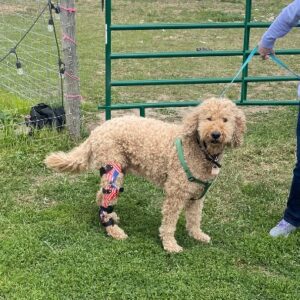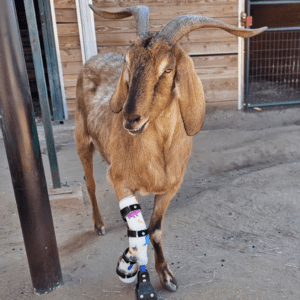Dog Hybrid Shoulder / Elbow Brace
$1,295.00
Custom-built brace combining shoulder and elbow support for dogs with complex front limb injuries. Ideal for trauma, deformities, or congenital conditions.
Starting at $1,295

Choose from the color options shown, enter choice on order form.
Description
🐾 Dog Hybrid Carpal Shoulder Brace
Custom Front Limb Brace for Shoulder, Elbow, and Carpal Support
The Dog Hybrid Carpal Shoulder Brace provides comprehensive support for dogs with complex front limb injuries. This custom-designed brace combines a carpal brace with a shoulder and elbow support system, offering full-limb stabilization for dogs recovering from trauma, surgery, or congenital deformities.
We created this hybrid brace to help dogs who need more than just carpal or elbow support. By stabilizing multiple joints in one integrated design, the brace improves alignment, reduces strain, and promotes healing. Whether your dog struggles with nerve damage, joint instability, or limb deformities, this brace offers a non-invasive solution tailored to their needs.
🔧 Key Benefits of the Dog Hybrid Carpal Shoulder Brace
- Stabilizes the shoulder, elbow, and carpal joints
- Supports recovery from trauma, surgery, or congenital conditions
- Custom-built to match your dog’s anatomy
- Available for front or rear limb combinations
- Designed for comfort, mobility, and long-term use
🐶 Hybrid Bracing for Rear Limbs Also Available
We also offer hybrid rear limb braces, combining a knee brace with a hock brace to support dogs with complex hind leg injuries.
📞 Call 509-934-0067 to speak with our team about your dog’s condition
📧 Email: [email protected]
⚠️ Important Information
- Report any issues within 30 days
- Free adjustments available for 6 months
- No refunds (custom product)
- Animal acceptance not guaranteed, but we’ll work with you to ensure the best fit
Our Blog has a lot of useful information, Here are some helpful topics:
- How To Measure For a Dog Knee Brace
- Do Knee Braces Really Work For Dogs?
- Why Specialized Pet Solutions Builds a Better Product
- Dog Knee Braces Are Better Than TPLO Surgery
- Using a Dog Knee Brace For Pre and Post TPLO
- Pioneers In the Animal O&P Industry
-
Proper Fitment of a Dog Knee Brace or ACL Leg Brace for Dogs








